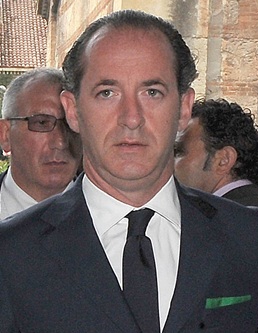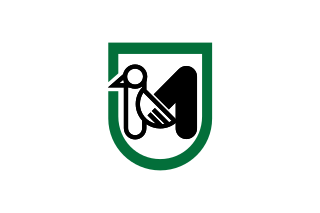
The regions of Italy are the first-level administrative divisions of the Italian Republic, constituting its second NUTS administrative level. There are twenty regions, five of which are autonomous regions with special status. Under the Constitution of Italy, each region is an autonomous entity with defined powers. With the exception of the Aosta Valley, each region is divided into a number of provinces.
A regional council in Italy is the elected legislative assembly of a region of Italy. In Emilia-Romagna and Sicily, the legislative bodies are called the Legislative Assembly of Emilia-Romagna and the Sicilian Regional Assembly, officially nicknamed as Sicilian Parliament, respectively.

The Politics of Sicily, Italy takes place in a framework of a semi-presidential representative democracy, whereby the President of Regional Government is the head of government, and of a pluriform multi-party system. Executive power is exercised by the Regional Government. Legislative power is vested in both the government and the Sicilian Regional Assembly.

The president of Veneto is the supreme authority of Veneto, a region of Italy.

The Politics of Calabria, Italy takes place in a framework of a presidential representative democracy, whereby the President of Regional Government is the head of government, and of a pluriform multi-party system. Executive power is exercised by the Regional Government. Legislative power is vested in both the government and the Regional Council.

The politics of Apulia, Italy take place in the framework of a semi-presidential representative democracy, whereby the President of the Region is the head of government, and of a pluriform multi-party system. Legislative power is vested in the Regional Council of Apulia, while executive power is exercised by the Regional Government led by the President, who is directly elected by the people. The current Statute, which regulates the functioning of the regional institutions, has been in force since 2004.

The politics of Lombardy, a region of Italy, takes place in a framework of a semi-presidential representative democracy, whereby the President of the Region is the head of government, and of a pluriform multi-party system. Legislative power is vested in the Regional Council of Lombardy, while executive power is exercised by the Regional Government led by the President, who is directly elected by the people. The current Statute, which regulates the functioning of the regional institutions, has been in force since 2008.

The politics of Piedmont, a region of Italy, takes place in a framework of a presidential system of representative democracy, whereby the president of Piedmont is the head of government, and of a pluriform multi-party system. Executive power is exercised by the regional government. Legislative power is vested in both the government and the Regional Council of Piedmont.

The Politics of Abruzzo takes place in a framework of a presidential representative democracy, whereby the President of Regional Government is the head of government, and of a pluriform multi-party system. Executive power is exercised by the Regional Government. Legislative power is vested in both the government and the Regional Council.

The Politics of Campania takes place in a framework of a presidential representative democracy, whereby the President of Regional Government is the head of government, and of a pluriform multi-party system. Executive power is exercised by the Regional Government. Legislative power is vested in both the government and the Regional Council.

The politics of Emilia-Romagna, a region of Italy, takes place in a framework of a presidential representative democracy, whereby the President of Regional Government is the head of government, and of a pluriform multi-party system. Executive power is exercised by the Regional Government. Legislative power is vested in both the government and the Legislative Assembly.

The politics of Tuscany, Italy take place in the framework of a semi-presidential representative democracy, whereby the President of the Region is the head of government, and of a pluriform multi-party system. Legislative power is vested in the Regional Council of Tuscany, while executive power is exercised by the Regional Government led by the President, who is directly elected by the people. The current Statute, which regulates the functioning of the regional institutions, has been in force since 2005.

The Politics of Liguria, Italy takes place in a framework of a presidential representative democracy, whereby the President of Regional Government is the head of government, and of a pluriform multi-party system. Executive power is exercised by the Regional Government. Legislative power is vested in both the government and the Regional Council.

The Politics of Marche, Italy takes place in a framework of a semi-presidential representative democracy, whereby the President of the Region is the head of government, and of a pluriform multi-party system. Legislative power is vested in the Regional Council, while executive power is exercised by the Regional Government led by the President, who is directly elected by the people. The current Statute, which regulates the functioning of the regional institutions, has been in force since 2004.

The Politics of Umbria, one of the 20 regions of Italy, takes place in a framework of a semi-presidential representative democracy, whereby the president of the region is the head of government, and of a pluriform multi-party system. Legislative power is vested in the Legislative Assembly of Umbria, while executive power is exercised by the Regional Cabinet led by the President, who is directly elected by the people. The current statute, which regulates the functioning of regional institutions, has been in force since 2005.

The politics of Molise, Italy takes place in a framework of a presidential representative democracy, whereby the president of regional government is the head of government, and of a pluriform multi-party system. Executive power is exercised by the regional government. Legislative power is vested in both the government and the Regional Council.

The president of Lombardy is the supreme authority of Lombardy, the most populated region of Italy.

The president of Tuscany is the supreme authority of Tuscany.

The president of Marche is the supreme authority of Marche. It was originally appointed by the Regional Council of Marche.

Stefano Bonaccini is an Italian politician and member of the Democratic Party (PD), of which he is serving as president since 12 March 2023. In 2024, he was elected to the European Parliament to represent North-East Italy.




















